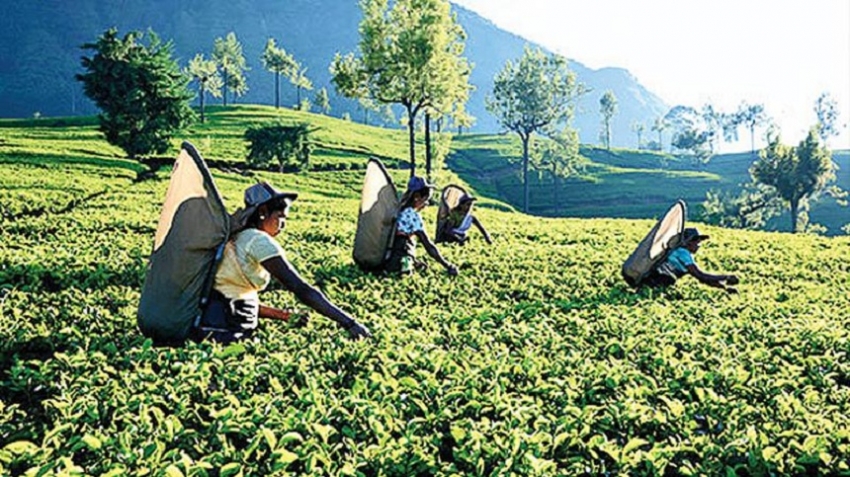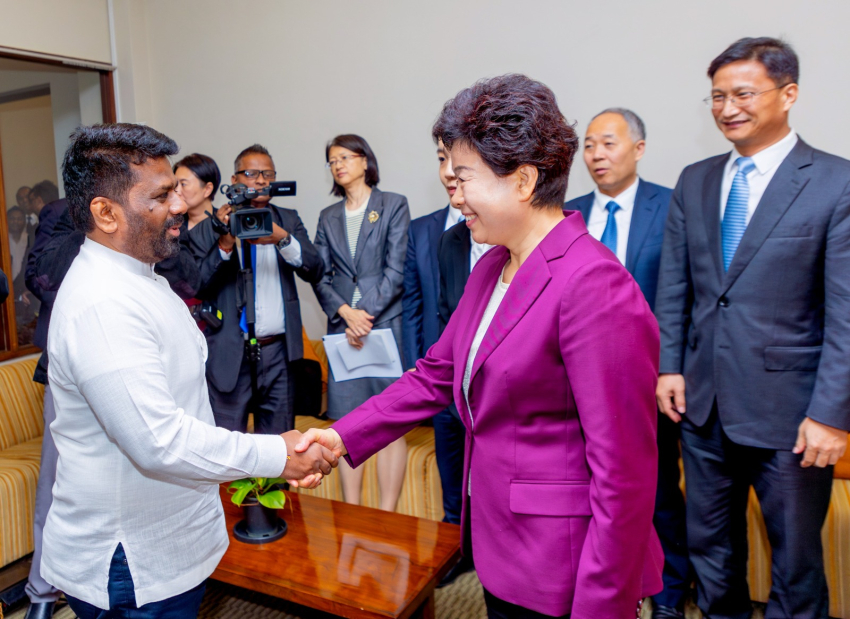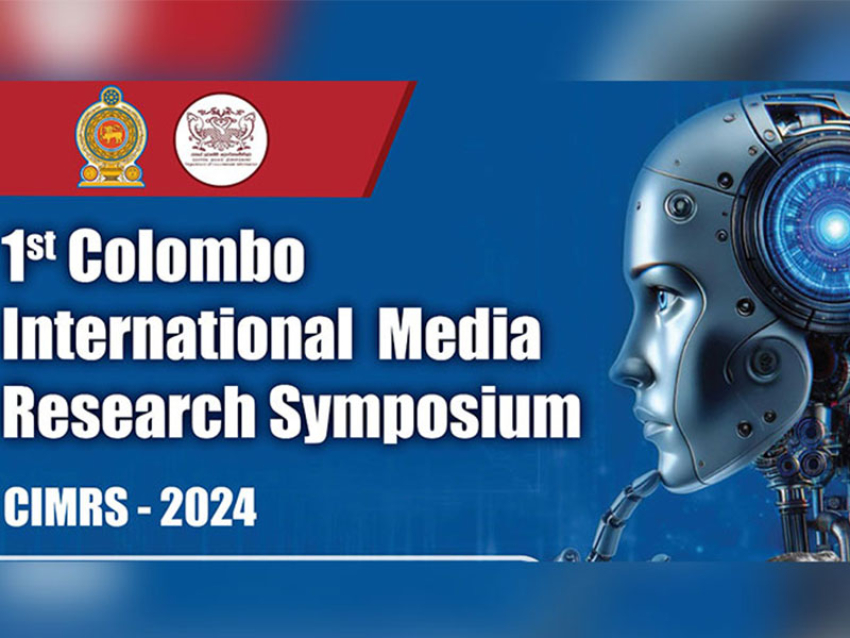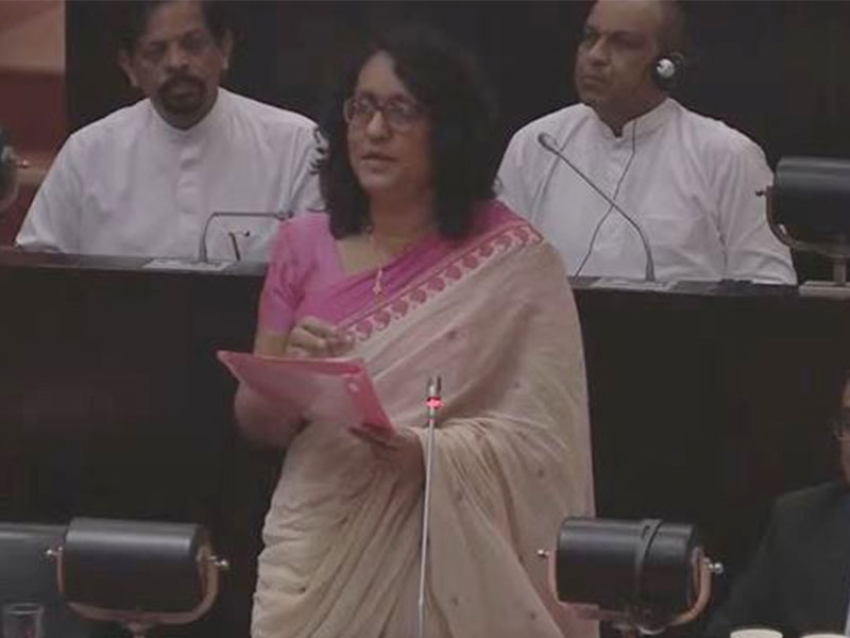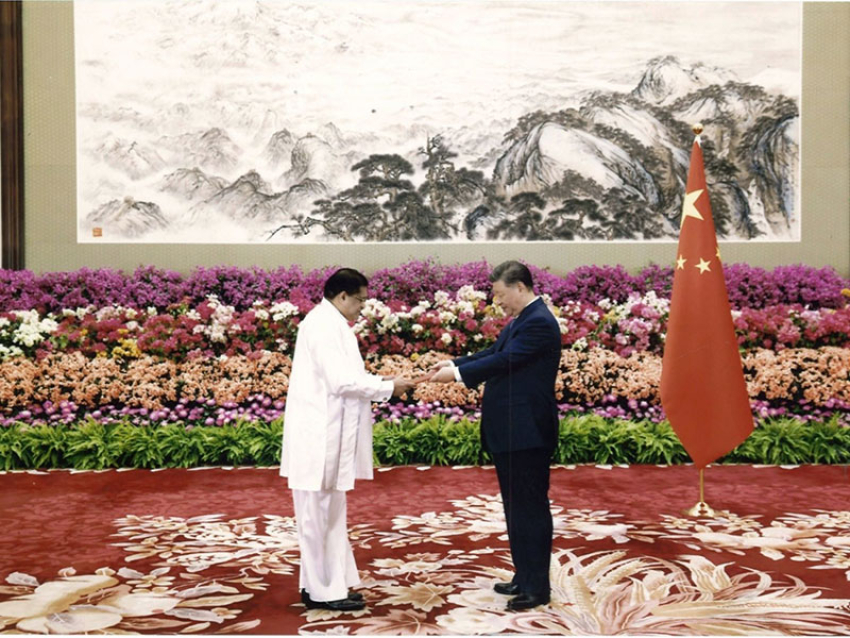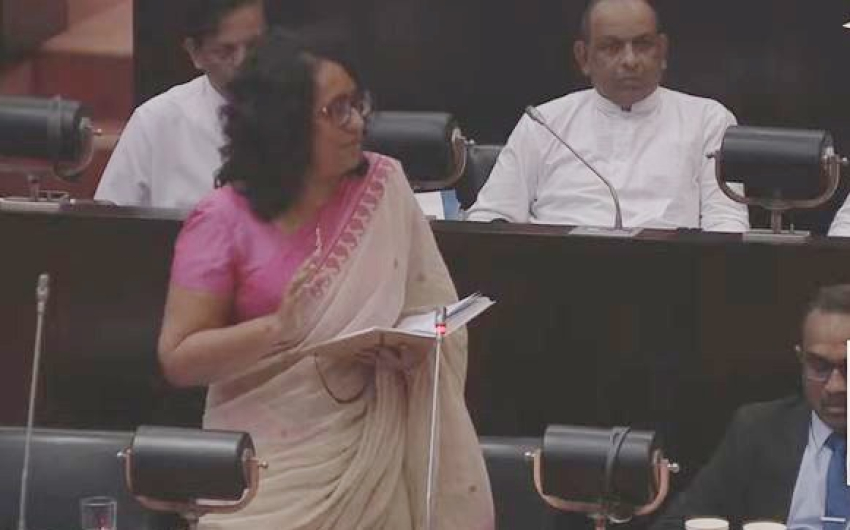The serious decline in the overall value of the entire tea industry be it growing, manufacturing or exporting is a matter for investigation as a first step towards re-igniting this once glorious national pride. File pic: Lake House Media Library
The serious decline in the overall value of the entire tea industry be it growing, manufacturing or exporting is a matter for investigation as a first step towards re-igniting this once glorious national pride. File pic: Lake House Media Library
The tea industry must be looked at from a different perspective, as two distinct industries, tea growing/manufacturing and tea marketing, to make use of the opportunities rampant in the world consumer preferences and to meet such demands by producing quality controlled products at profitable and competitive levels.
While the Plantation Ministry has the infrastructure to enforce good agricultural practices (GAP) and Good manufacturing practices (GMP) to ensure the quality of every kilo of tea produced, the EDB under the external trade ministry could be empowered to boost the global market share for tea.There are several natural products now in vogue as superfoods for their inherent health supportive properties. Virgin coconut oil, Coconut cream and Moringa are products exported from Sri Lanka to meet an increasing demand in the superfood category.
Similarly, tea could be transformed into this category for its anti-carcinogenic property of ‘polyphenols’. Kombucha containing probiotics is another tea product on the superfood scale. With labeling identifying these properties backed by R&D, tea has the potential to be upgraded as a health supportive consumer product as opposed to the common thirst quencher.
Disrupt instead of destruct
Tea has not had the benefit of new technology due to industry leaders refusing to change. Disruption of archaic concepts and change from the Iron Age to Nano tech age is badly needed in the tea industry, if it is to make use of the opportunities available.
Albert Einstein is widely credited with saying, “The definition of insanity is doing the same thing over and over again, but expecting different results.” Every sector in the tea industry needs disruption for shift in paradigms. This is commonly termed as thinking out of the box. Refusal to change will result in slow but sure destruction.
For instance, tea smallholders can be empowered with new technology with education on economy of scale to run their small businesses as private cooperative units as the original model for sustainable family business has now changed with land fragmentation and increased cost of labour and other inputs.
Private tea factories have proliferated with political patronage leading to malpractices. For an example, Kenya produces nearly 400 million kgs, in 160 factories, while Sri Lanka operates over 700 factories for the annual output of over 300 million kgs.
Regional Plantation Companies (RPCs) can be empowered and provided autonomy to diversify into other related fields, such as forestry, animal husbandry, special export crops, eco tourism etc. to spread the risk of investments and be profitable without subsidies.
Exporters can be encouraged to expand the global reach with liberalisation of import export within controlled economic zones, lest there be ambiguity on the genuineness of the purpose.
The financial structure involving loans for agriculture, manufacturing and exports must be reviewed for interest rates compatible with global standards. Most exporters are reeling under debt to banks and non receipt of export proceeds having to pay penalty interest to financial institutions. The P&M fund to the tune of 6 billion rupees contributed to by the tea exporters should be utilized to support exporters and none other. If needed, this fund could be used as a rotating fund to support brand building by exporters. For a workable strategy, all stakeholders must be consulted with their sector strategies for an expanded economic model in tea without banking on handouts and subsidies.
The president has the desire to make Sri Lanka great having understood the potential our powerful island has to become an economic power base in the Indian Ocean.
Rationale
When a man from earth died and appeared at the “pearly gates”, Saint Peter the keeper of the gates accosted the man to find out what he was doing on earth to deserve a seat in heaven. The man most humbly answered, “St. Peter, back on earth I have been a tea trader all my life.” The gate promptly opened and St. Peter was heard to say, “Come in my son, take a harp, you have had enough of hell.”
Though in a lighter vein, most in the tea trade engaged in the business of marketing tea feel the heat of hellfire, in a volatile business environment often interfered and manipulated by politicians to expand the vote base. This has been the case since the plantations were nationalised by Mrs. Sirimavo Bandarannaike in 1976. The once profitable and tax paying industry gradually declined to become one of the biggest liabilities to the tax paying public.
An industry steeped in tradition and that has survived for over 150 years can be resurrected not with handouts, but only with sound business propositions based on the basic principle of market economy of supply and demand charged with innovation on the back of research and development.
A vast majority of us in different segments of the industry feel the pain of no gain having dedicated our productive life to the cause of Ceylon tea, we are too passionate about.
The magic of tea
Tea is a miracle crop and to harness the potential of tea is the business acumen. Imagine the British and Scottish planters coming by steamship back in the 18th century to clear jungles, uproot disease ridden coffee and plant tea as a commercial crop and being able to make good their investments.
Sir Thomas J. Lipton made his fortunes in Ceylon and built the world’s largest tea brand Lipton. Even today when we travel in the tea country, we are amazed as to how the British rulers built the infrastructure, the winding roads cut into the mountain slopes, the railroads tunnelled through the mountains, built gigantic factories and the deployment of labour brought in from South India, all of which made Ceylon tea the most famous global beverage. It was the private enterprise which succeeded with patronisation and not with intervention by the State.
Re-engineering tea
Wouldn’t it be prudent then to re-engineer this once glorious industry and turn it around to be self reliant on time tested principles and global demand for healthy beverages and superfoods. It is only then we could strategise the correct economic policy for our nation as professed by the government in building an export driven national economy.
In 2002, when branding was recognised as the way forward in that year’s budget on a proposal put forward by the newly formed Tea Exporters Association (TEA), the export industry was elated and there was hope for expansion of tea exports with liberal trade policies. The momentum that gathered after the incentives offered backed by ‘Stable Policies’ for branding saw the tea export values climbing up gradually surpassing the $ 1 billion mark and reaching $ 1.6 billion by 2014.
The tea industry was hopeful of going after a bigger target of USD 5 billion in tea exports by 2020 in support of the government’s ambitious drive to grow the total export revenue to 20 billion USD by 2020.
US $ 5 billion was targeted with the possibility of taking a bigger share of the global consumer market, then estimated around $ 35 billion per annum. The formation of a strictly controlled import/export hub for value addition and branding to compete on par with major tea brands such as Lipton, Titley, and Twinings and product diversification into tea extracts and derivatives backed by research and development were taken into consideration.
Although the government gazette of 1981 permitted the import of tea needed for blending and value addition, it lacked provisions for full liberalisation of the tea export industry. Hence the concept of a secluded hub was to ensure non-filtration of imported tea into the local supply chain to maintain the undiluted purity of Ceylon Tea.
Currently the value of global consumerism on black and green tea exceeds 60 billion USD per annum and growing at a healthy percentage year on year.
Status-quo
Composition of the industry - From an overall position the tea industry comprises large plantations or RPCs, tea smallholders, private tea factory owners, tea brokers and the tea exporters. The tea smallholders or individual tea farmers play a big role in the supply chain producing 60% of the tea crop.
Stagnation - But what do we witness today? A stagnant industry struggling to survive. The serious decline in the overall value of the entire tea industry be it growing, manufacturing or exporting is a matter for investigation as a first step towards re-igniting this once glorious national pride.
Decline in quality - It is the general perception that Ceylon tea is the best in the world, but unfortunately all teas produced in Sri Lanka do not fall within the finest quality stamped with a LION logo by the Sri Lanka Tea Board (SLTB). At the best 40% of the teas manufactured in the country qualify for the LION logo certification whilst the rest are comparable with teas from other origins.
Constricted supply chain - The production of tea is declining due to a multitude of reasons with very little hope of Sri Lanka’s tea crop to exceed 380 million kgs when the world tea production is increasing annually at an average of 6.5%. Our share of the global tea export trade has declined from 18% in 2010 to 12% in 2018 and will continue to decline, year on year making the supply chain constricted due to stagnant tea output.
Tea smallholder - The smallholder farmers who manufacture 60% of the tea crop rely heavily on government subsidies for fertiliser, planting materials and demand a guaranteed price for fresh leaf. The economic model of the smallholder tea farmers is non viable due to land fragmentation and the high cost manual operations with hired labour as opposed to self tending. Unless the operational model is rehashed with new technology being infused and increase the economy of scale under a cooperative model for shared labour, it will continue to suffer economic stress and rely heavily on the ex-checker.
The current subsidies paid out to the smallholder farmers could be invested in developing a productive economic model for prosperity and arrest further fragmentation.
The tea smallholder concept was a clever strategy adopted after the JVP instigated youth uprising in the 1970s, to gainfully engage the households in several poor regions by luring them into tea cultivation in home plots with government subsidies. Whilst it solved the problem of unemployment by transforming many thousands to self-employment in the early 80s the expansion in the family unit has resulted in fragmentation of land in the present time and the operational costs exceeding income.
RPCs - Large plantations classified under Regional Plantation Companies (RPC’s) regularly complain of difficulties in meeting the demands of politicised unions for increase in wages unrelated to productivity. Due to wages not being linked to productivity, cost of production (COP) in Sri Lanka is identified as the highest in the tea world.
The RPCs are also governed by restrictions imposed by the state (the golden shareholder) on activities outside of tea. If the plantations are allowed to diversify their business model to multi crops, forestry, animal husbandry and eco-tourism whilst adhering to modern growing and manufacturing practices for cost effective production, the plantation economy would surge from the present levels.
Private tea factories - The proliferation in private tea factories in violation of laid down regulations has caused severe damage to the quality of tea. The problems created by unscrupulous factories in adulteration using sugar and other substances has resulted in Ceylon tea being strictly monitored for MRLs by several importing countries.
Tea economy
Developed countries are already using tea as an industrial base material for a multitude of high end products in many different consumer segments.
Tea is the number one beverage in the world which is natural, affordable and free from any allergies, safe to drink at any age or any stage, even during pregnancy.
Global tea economy - Tea is the earliest beverage in the world discovered in China many centuries ago. Today it is consumed in every nook and corner of the world for its therapeutic value as an all day rehydrating drink. Apart from tea being consumed as a hot beverage, tea is used as an ingredient in the following segments.
1 Iced teas & tea based soft drinks
2 Pharmaceuticals such as polyphenols
3 Fragrance and non beverage applications as skincare products.
4 Solid foods such as tea cookies and tea pestos, tea salads.
5 Green tea powder as a superfood in milkshakes and in cooking.
If an assessment is to be carried out for all segments of this super commodity a value close to 100 billion USD could be attributed at current consumer levels. One of the most exciting factors is the rediscovery of tea for its hidden therapeutic values driving the youth across the globe towards tea which was earlier a drink of the elderly.
If the government is serious about the tea economy, they should free the industry from state intervention and political interference and allow the industry to operate as a business. Tea is rich with tradition and these traditions could be transformed into trends for greater benefit of the industry at large. All that the industry needs are policies based on market economy, a tax regime supporting competitive exports and autonomy for the export industry.
World tea production is ever increasing due to demand, especially in China and India to meet internal consumption and is targeted to reach 6 billion kgs.
World tea export volume has exceeded 1.8 billion kgs out of tea producing countries and tea HUBs and continue to increase, whereas the global “retail” market for tea as a hot beverage is close to 60 billion USD
Tea, Apart from being used as a hot beverage, iced tea in ready to drink form is making vast strides in the beverage sector. Tea is also a base for several non beverage products used in pharma, wellness and even as a safe alternative to kick the habit of smoking.
Sri Lanka has the most advanced tea packaging factories amongst the tea producing countries but has raw material limitation of 350 million kgs or 6.3% of the world production
The question now is, should we be big fish in a small pond or small fish in a big pond? Bigger the pond room to grow.
At a time when the new President has voiced his desire through his well documented manifesto to make Sri Lanka a prosperous nation, It may be worth looking at the following fundamentals in social economic justice for Nation building.
Tea strategy
The dynamics of the industry - There are two very specific and inter connected sectors in the tea industry, tea growing/manufacturing and tea exports. These two segments have to be separately identified and brought under specific ministries for a result driven export economy. Unlike in the past where the plantations were directly linked to the export-houses in Colombo, nationalisation of the estates caused to segregate plantations and exports. Though the exporters are not asking for handouts, several sectors in the tea industry are under severe stress due to veering off the commercial path and relying heavily on political patronage the industry has got used to over the years. Weaning these sectors off such unrealistic economic models is the biggest challenge for the government in power.
Taking a bold step to convert the entire industry to a self reliant model based on the economic principle of supply and demand should be the target with timelines set for achieving. We must not forget that tea was an industry not relying on the state but contributed to the exchequer before the nationalization of the plantation industry.
Hence it will not be a Herculean task to make tea a profitable industry once again to contribute to and not beg for assistance from the state.
Segregation of the industry on the different strengths of plantations for manufacturing and exports for value addition with branding as consumer ready products would truly expose the strengths and weaknesses to strategize productive measures for the entire tea industry.
The liberalisation of the tea export industry has been a moot point for several decades and due to political connotations and objections from groups with vested interest never saw the light of day. The tea HUB or the special economic zone was proposed to carve out a larger portion of the global tea market, through value addition of teas from all origins. Though it was accepted in principle and even approved by lawmakers the implementation never took place. It was even considered by the Ministry of Finance to start the process under a controlled scheme based on the statutes gazetted in 1981.
One other proposal by TEA was for a change in the way tea is procured. An electronic auction system similar to a commodity exchange. This would cut down the procuring time by a big margin and make the process more transparent, efficient and free of malpractices. A once thriving industry which paid all statutory taxes to the government became a debtor to the nation after the estates and agency houses were nationalised in 1975. Subsequent reversal with government control has not paid the desired results and continues as a burden.
The socialist economic policies of successive governments to placate the voters have resulted in uneconomic repercussions and it is not easy to turn around from a state of welfare to that of a hardworking nation without the political will to do so.
1 You cannot legislate the poor into prosperity by legislating the wealthy out of prosperity
2 What one person receives without working for, another person must work for without receiving?
3 The government cannot give to anybody anything that the government does not first take from somebody else.
4 You cannot multiply wealth by dividing it
5 When half the people get the idea that they do not have to work because the other half is going to take care of them, and when the other half gets the idea that it does no good to work because somebody else is going to get what they work for, that is the beginning of the end of any nation.
The writer is SLT Chairman and a Past President of the National Chamber of Exporters and a Past Chairman the Tea Exporters Association
****
Sri Lanka tea economy
* Exports - 300 to 340 million kgs per annum generating 1.6 billion USD or thereabouts.
* Value addition, consumer ready (real term) around 40% of total exports.
* Exports under local brands are not more than 20% of total exports.
* Genuine Ceylon Tea as recognised by the Lion logo certification - not more than 40% of the total annual production or 130 million kgs
* Almost 60% of the annual production is non-competitive at global level due to the high cost of labour and closed door economic policy for tea.
* Good Agricultural Practices (GAP) and Good Manufacturing Practices (GMP) vastly disregarded making the renowned quality of Ceylon tea questionable.
* BMFannings can be profitably used as a raw material in the extraction of tea properties for several tea based derivatives. Unfortunately due to lack of an appropriate scheme these are reprocessed with banned substances and filtered into the market as black tea which is a serious threat to the good name of Ceylon Tea.
* Brewed tea currently estimated around 60 billion USD is expected to reach 73 billion USD by 2024.
* In the US Ready to Drink teas recorded a market cap of 10.75 billion USD in 2017 and Kombucha (fermented ready to drink tea) a market cap of 576 million USD. Globally these two tea derivatives are making impressive progress in the consumer share of throat with the demand increasing by an impressive 10% year-on-year.
* The global consumer market for tea and tea based products is estimated to be in the region of $ 100 billion within the next five years.

